This hat is knit in the round, offered in two pattern ways with long histories. One is the sunwheel and the other is a ladder. The sun wheel is one of the oldest symbols from this part of the world. An alternate version shows the ivy vine, a symbol of fidelity, along with the ladder pattern that is said to protect the wearer because it symbolizes Jesus’ suffering. The structure of the hat, as was the ladder pattern, is taken from Knitting in the Nordic Tradition by Vibeke Lind.
The sundial and ivy patterns were taken from The Mitten Book by Gottfridsson and Gottfridsson.
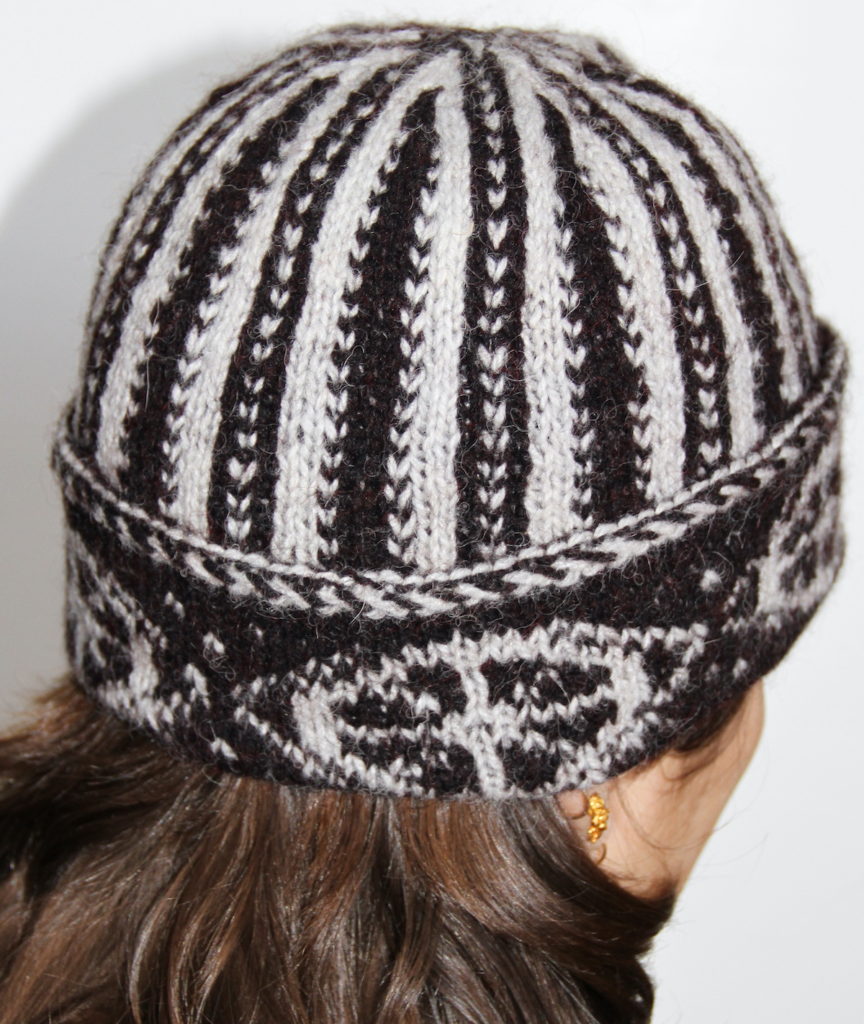
Sundial
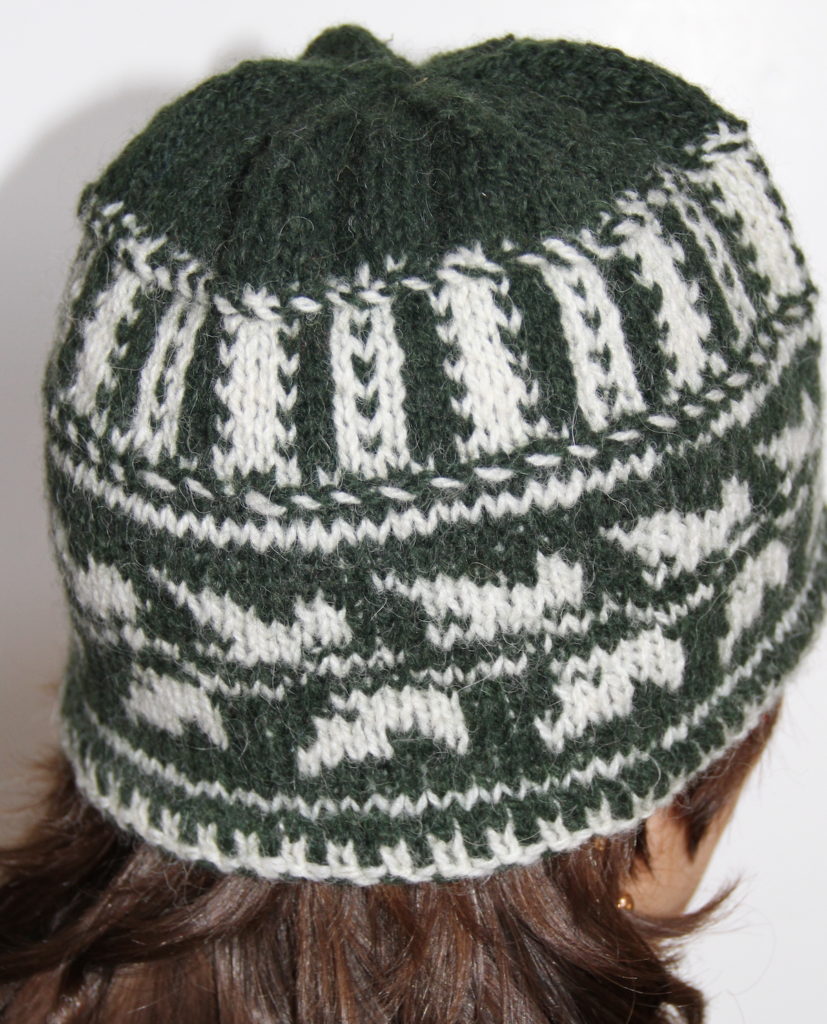
Ivy
Please note: This pattern has not been fully test knit.
The yarn used in the sample is small batch yarn produced in Virginia by Solitude Wool from Clun Forest sheep and alpaca. A proponent of world production from heritage breeds.
Needles
Size US 4/3.5 Metric. Use four double-pointed needles, distributing 28 stitches onto each needle; or use a circular needle, or 2 circular needles.
Yarn
1 skein each of Solitude Clun Forest 70% wool, 30% alpaca 2-ly light sport weight
Gauge
20 stitches and 24 rows = 10 cm
Instructions
Cast on 112 stitches, holding 2 needles together for maximum stretch, using the following braided, 2-color cast-on:
- Knot the 2 colors together and hold the knot in your palm to begin.
- Use the same hand notions as for a long-tailed cast-on but holding the dark yarn at the bottom around the thumb and the light yarn over the forefinger.
- The needle goes up through the dark yarn around the thumb, picks up the light yard and ducks back through the thumb loop.
Reality check: The dark yarn should make the chain at the bottom of the cast-on edge.
Round 1: Hold both strands of yarn in front of the work. Using the dark yarn first, purl the first stitch. Then bring the light yarn under the dark yarn and purl. Continue, alternating colors and bringing the working yarn strands under each other.
Round 2: Same as Round 1
Rounds 3-5: Knit two dark rows, carrying the light yarn up the rows on the inside.
Begin sunwheel or ivy pattern.
Purl one row. Turn brim inside out and prepare to knit back the other way. The yarn should again be coming from the left side.
Knit three rows of dark.
Begin ladder pattern.
Work in ladder pattern until piece measures 5 inches/13cm.
Begin decreasing for the crown as follows:
- Decrease Round 1: K3 in patt, K2togtbl, so the decrease falls in the black stripe.
- Decrease Round 2: K 9 in patt, k2tog, so it falls in the black stripe, repeat.
- Decrease Round 3: Knit 1 row plain
- Decrease Round 4: K2, K2tog so it falls in the middle of a white stripe.
Chart: Sunwheel
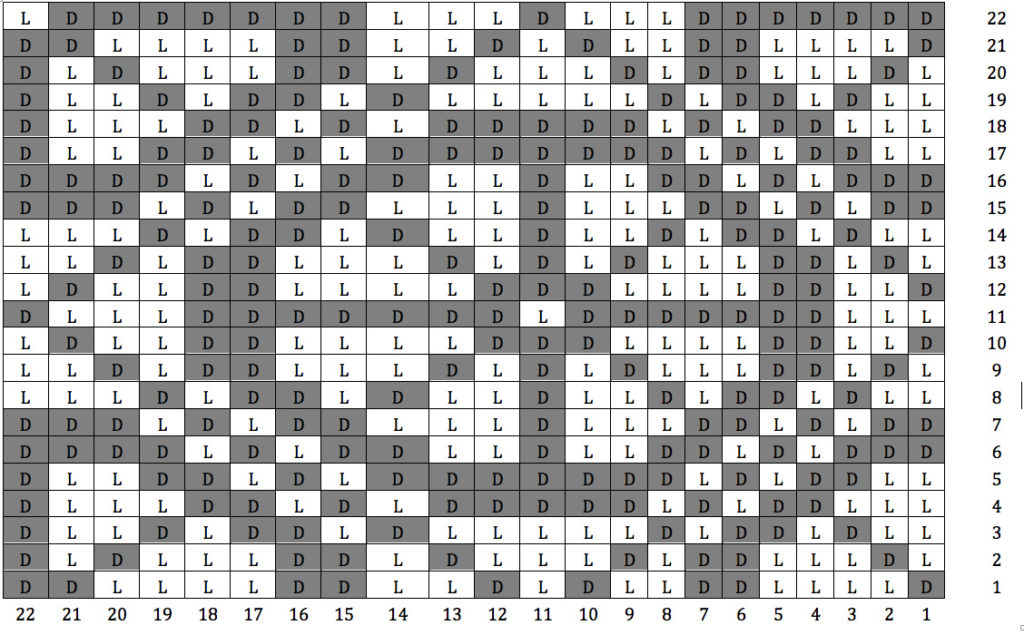
Source: Sundial of Southern Gotland Gottfridsson, The Mitten Book, page 55
Chart: Ivy
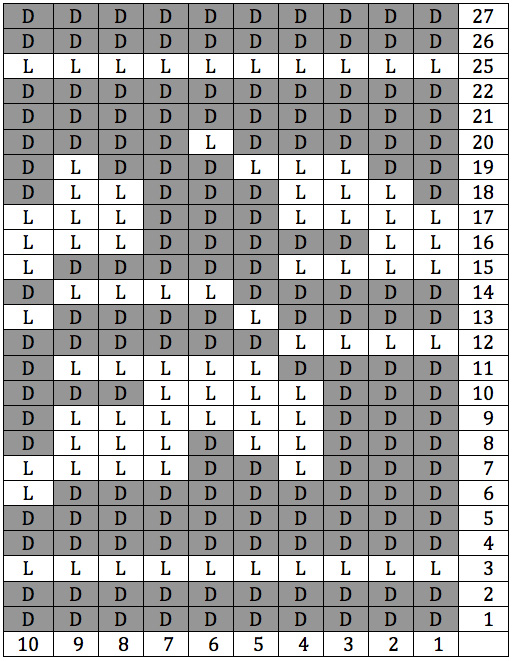
Source: Ivy pattern from Knitted Suspenders, Gottfridsson Ladder Pattern, page 64
Chart: Ladder
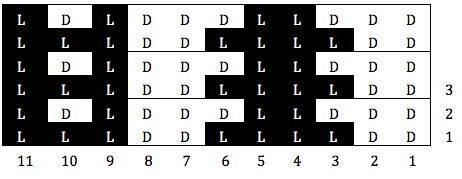
Source: Lind, page 86.
Chart: Crown Decreases

| Sunwheel |
| The sunwheel is a pre-Christian symbol with pagan origins.10 At the dawn of the Bronze Age, it was a common symbol on rock carvings, and found as the only symbol where all the other images represented animals or humans. It is often seen with eight divisions, as in the sun symbol in Latvian textiles11 and may be related to the spinning wheel symbol found on the Faroe Islands.12 |
| It appears in the earliest systems of writing used by the Egyptians, Hittites, Cretians, Greeks, Etruscans, Romans, pre-Columbian America, and the Near East. In Norway, the sun cross appeared as the symbol for Odin, the highest god of the pre-Christian Nordic religion and the god of art, culture, war, and the dead. In China, it stood for thunder, power, energy, the head, and respect. |
| In astronomy and astrology, it is used as a symbol for the planet Earth. In earlier times, it was used for the symbol of the sun – or the king – being the highest earthly power. Christians adopted the symbol and gave it the name the Gamma Cross. When a church is consecrated, this symbol is drawn in water or oil at 12 locations within the church walls.13 |
